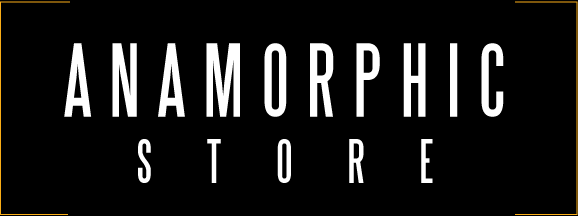This is a guide to DSLR help shooters properly calibrate their single focusing anamorphic lens.
Almost all anamorphic lenses were built as dual focus. This means that focus can only be achieved by focusing both the anamorphic lens and the taking lens that the anamorphic is attached to. For the complete dual-focusing guide, see our article on how to dual focus anamorphic lenses.
Single focuing anamorphic lenses work by adding an inverted set of diopters in front of the anamorphic and taking lens. By varying the distance between those diopters, we can change the focal point of the entire setup with just one focus throw. This set of optics is called a rangefinder. If you already own an anamorphic lens, all you need is a rangefinder. Our premium optics single focus attachment was built for this purpose.
A single focus anamorphic lens kit must be calibrated to infinity before using a single focusing anamorphic rangefinder. After calibrated, the single focus rangefinder will change focus from infinity to around 2-3 feet.
This guide is specifically written using our Isco Anamorphic Single Focus, but this technique will work with any anamorphic lens and single focus rangefinder.
Once you’ve mastered this technique, check out our similar guide on how to use the same principles to achieve macro focus anamorphic.
How to use the Isco Micro Single Focus Kit
Step One: Set your taking lens to infinity
Start with only your DSLR and prime lens. Set your taking lens to around infinity. For this example, we are using a Panasonc GH5 with v2 firmware.
Step Two: Attach your anamorphic lens clamp
Attach your anamorphic lens clamp (included in our anamorphic lens kits) to the front filter of your prime lens. If necessary, use step up or down rings to attach the clamp to your filter thread. Make sure that the clamp is tightly screwed in to the front filter thread and there is no play or wiggle.
Step Three: Attach and align your single focus anamorphic lens kit
Anamorphic lenses need to be perfectly aligned vertically. If the axis is off, then your anamorphic scope will be skewed. After you’ve attached the clamp to the prime lens, place your anamorphic lens in the very front of the clamp. You may check alignment by looking at your viewfinder, making any needed tweaks, and then pushing the anamorphic lens deep into the clamp to lock.
You may additionally shine a light directly into the lens. If the resulting anamorphic flares are aligned along the horizontal axis, your anamorphic lens is perfectly aligned.
If you have small misalignment, no worries. They can be corrected by the Corner Pin effect in Adobe Premiere Pro or After Effects.
Step Four: Calibrate Infinity Focus
To calibrate infinity focus, you will need to focus both the anamorphic lens and the taking lens. Start by making sure that the single focusing anamorphic component is set to infinity. On our single focus attachment, infinity is all the way to the right.
Then, focus the anamorphic lens (on our Isco Micro, far focus is left). On almost all anamorphic lenses- actual infinity distance will actually be before the lens reaches the end of the range. If you have turned the focus ring all the way to the left, you will have gone too far.
Once you see perfectly round bokeh in your DSLR viewfinder, your anamorphic lens is in focus. Adjust your prime lens. This should bring the full image into focus. Double check and make small adjustments and tweaks to both lenses if necessary. Focus peaking helps greatly.
Once calibrated, you can now focus with just the single focus rangefinder.
If the prime lens or anamorphic lens drifts, you will lose focus. If you have purchased a lens form us with the Isco focus lock mechanism, then lock the focus of the anamorphic lens so it does not drift and you do not run into this problem.
Additional notes:
- If you are using a SuperScope, your infinity point on your anamorphic lens will shift slightly closer. If adding it to an already-calibrated setup, you will need to recalibrate your infinity.
- Although we have set the anamorphic lens to infinity, we can set it to whatever point we like. So if we calibrate our taking and anamorphic lenses to 10 feet, our focus range on the rangefinder will now be 10 feet to inches. This can be an effective technique for achieving very close focusing with anamorphic lenses.
- This may take practice for the first few times. Anamorphic focusing can be intimidating at first but is well worth the results!
Additional Anamorphic Resources
And that’s all! The only accessories we might recommend to make focusing easier would be a Gini-Rig to help support your setup. Generally an anamorphic kit will not require support, but when adding both a single focus and a SuperScope you may prefer to add a lens support to help keep stress off of the camera lens mount.
Also be sure that you have enough step up and step down rings to experiment with your anamorphic lens kit on a wide variety of prime lenses.
If you are interested adding anamorphic lenses to your cinematography toolbox, please visit our anamorphic lens store for demos and examples. We have spent several years collecting, modifying, and testing anamorphic lenses to weed through the junk, make needed modifications, and assemble ready-to-shoot packages.
If you are interested in learning more on working with anamorphic lenses and DSLR, please check out our anamorphic tutorial blog for more anamorphic tips and tutorials!






